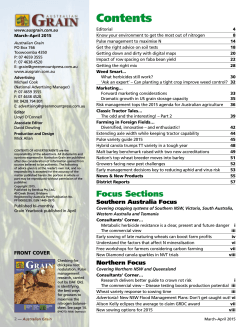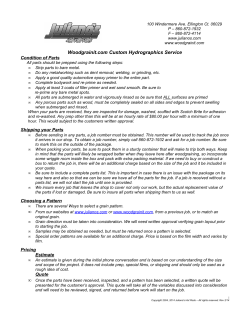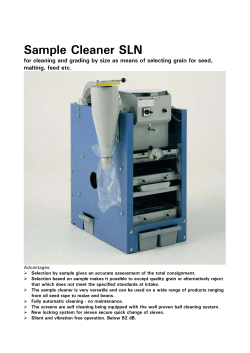
Pest Identification - AHDB Cereals & Oilseeds
9 PEST IDENTIFICATION Commonest primary pests Secondary pests Pest mites Moths Can increase rapidly and damage grain stored at 14.5% mc. Cannot complete their life-cycles at 14.5% mc or below. Feed primarily on fungi. Can invade grain stores in large numbers from outside and feed directly on grain. Normally only a problem on damper surface of dry bulk. May be seen flying in summer. Webbing produced by larvae may clump grains together. Mainly occur on surface of bulk, also infest and breed in debris. Grain weevil Sitophilus granarius Develops inside the grain. Causes heating. Difficult to find. Hairy fungus beetle Typhaea stercorea Often associated with stored straw and hay, as well as damp residues. Flour mite Acarus siro Indicates bulk mc is higher than recommended.Internal feeder which can build up massive populations. Brown house moth Hofmannophila pseudospretella Often associated with animal feeds. Saw-toothed grain beetle Oryzaephilus surinamensis Only develops on damaged surface of grain. Very active and easy to trap. Foreign grain beetle Ahasverus advena Increasingly common in UK.Very mobile and a common cause of rejection. Cosmopolitan food mite Lepidoglyphus destructor Surface feeder usually present in low to moderate numbers. White-shouldered house moth Endrosis sarcitrella Slow to develop in old grain or feed residues. Rust-red grain beetle Cryptolestes ferrugineus Penetrates grain through minute cracks. Can f ly in hot UK summers. Fungus beetles eg Cryptophagus species Frequent in damp,mouldy residues and can wander into stored grain. Grainstack mite Tyrophagus longior Initial infestations often occur during bulk drying operations.Requires high mc and temperature. Moth larva Distinguished from beetle larvae by dark head capsule. Australian spider beetle Ptinus tectus Seldom found in UK grain, but survives in structure of warmer stores. Other primary pests Occasionally found on UK grain but require high temperatures and do not overwinter well. White-marked spider beetle Predatory & other mites Booklice Large numbers indicate high temperatures and previous infestations. Considerable numbers may build up at grain surface, mainly in winter. Can be clearly seen running over storage structures. Rice weevil Sitophilus oryzae/zeamais Mainly associated with imported feedstuffs.Can move into stored grain. Eggs laid inside grain. Ptinus fur Numbers can take years to build up.Can survive long periods in an inactive form. Predatory mite Cheyletus eruditus Preys on pest mites as well as small beetle and moth larvae. – wingless Require damper conditions,ubiquitous in UK. Lesser grain borer Rhyzopertha dominica Eggs laid on grain surface, larvae burrow inside to develop. Plaster beetle Lathridiidae Very small black beetles which flourish in damp, mouldy residues. Gamasidae Long-legged fast movers may prey on pest mites. Individuals may also be blood feeders on rodents – winged Can be found in spectacular numbers, especially around edges of grain bulk. Pest status not clear. Rust-red flour beetle Tribolium castaneum Requires a high proportion of damaged grains to thrive. Frequently found in animal feed mills. Insect stages Beetle larva Jaws often distinguish these from moth lar vae. 20 21
© Copyright 2025














